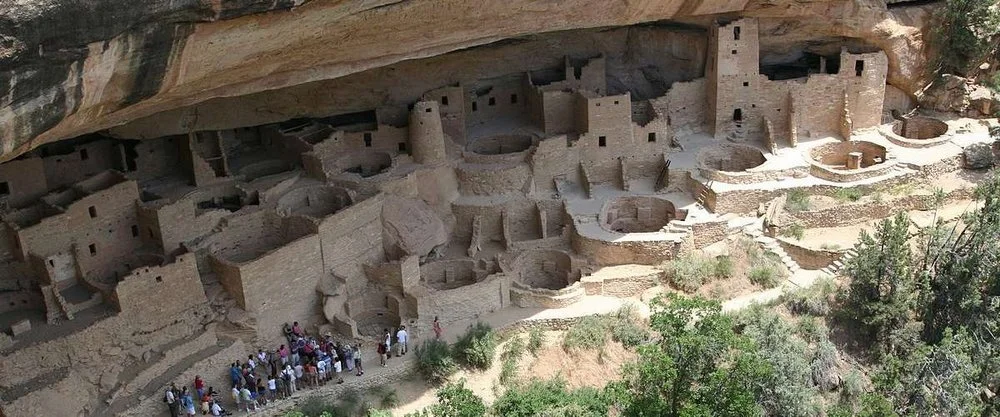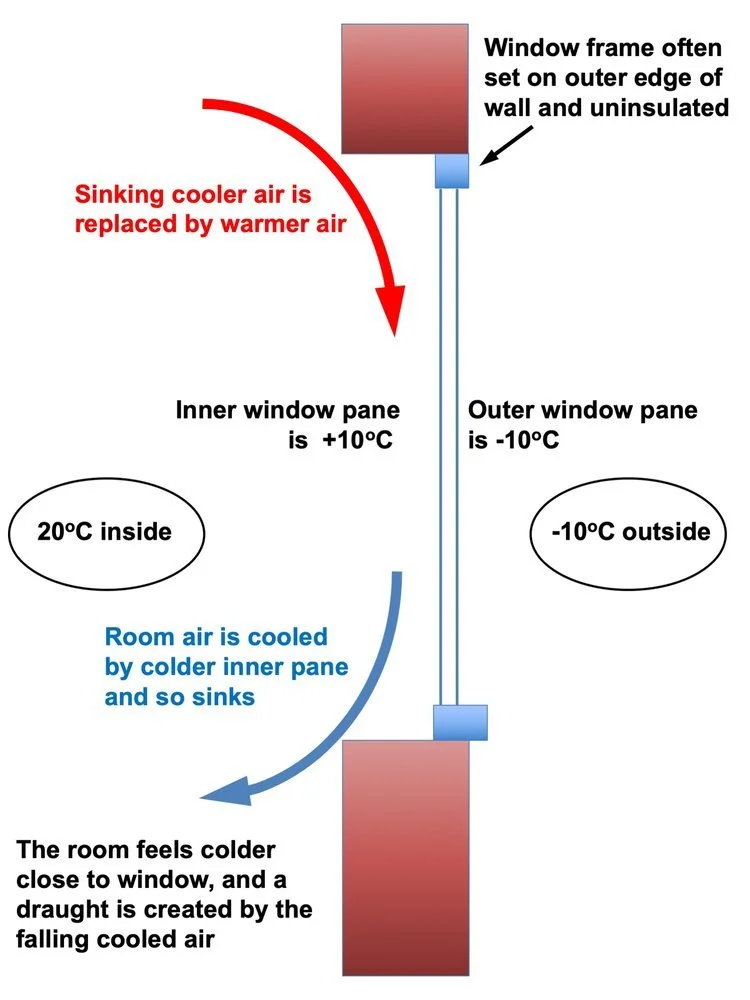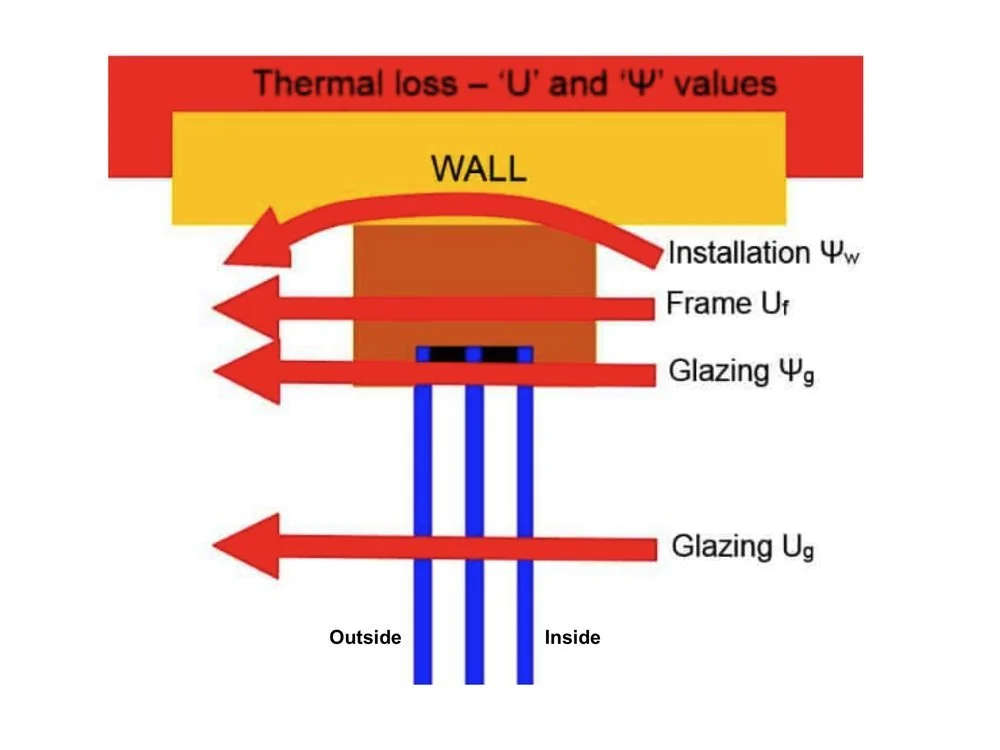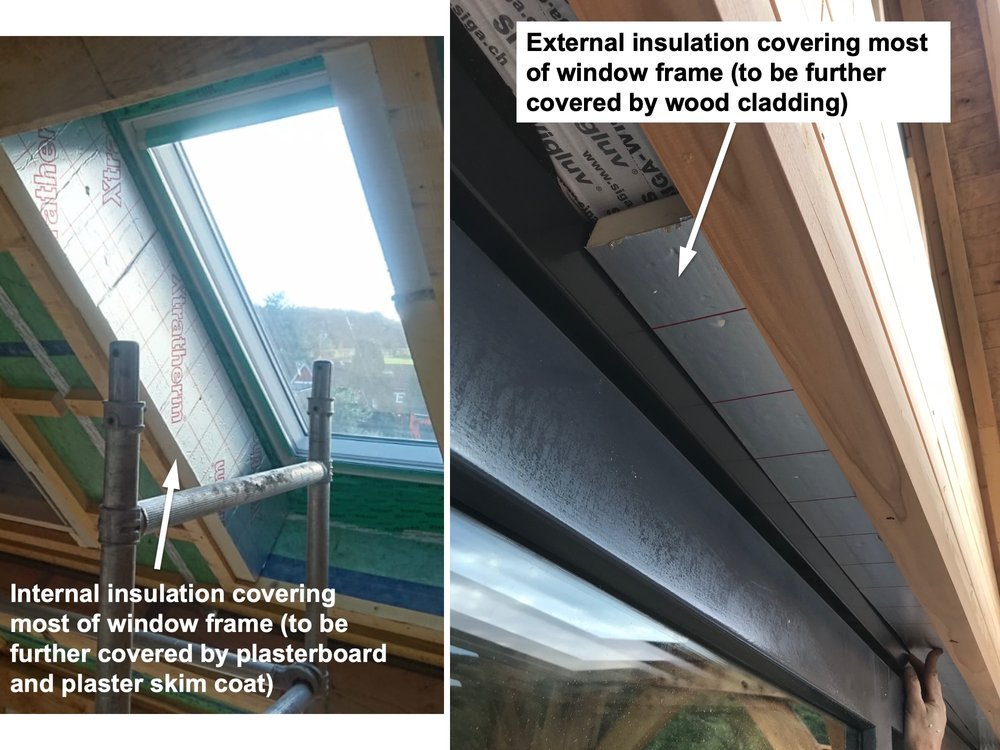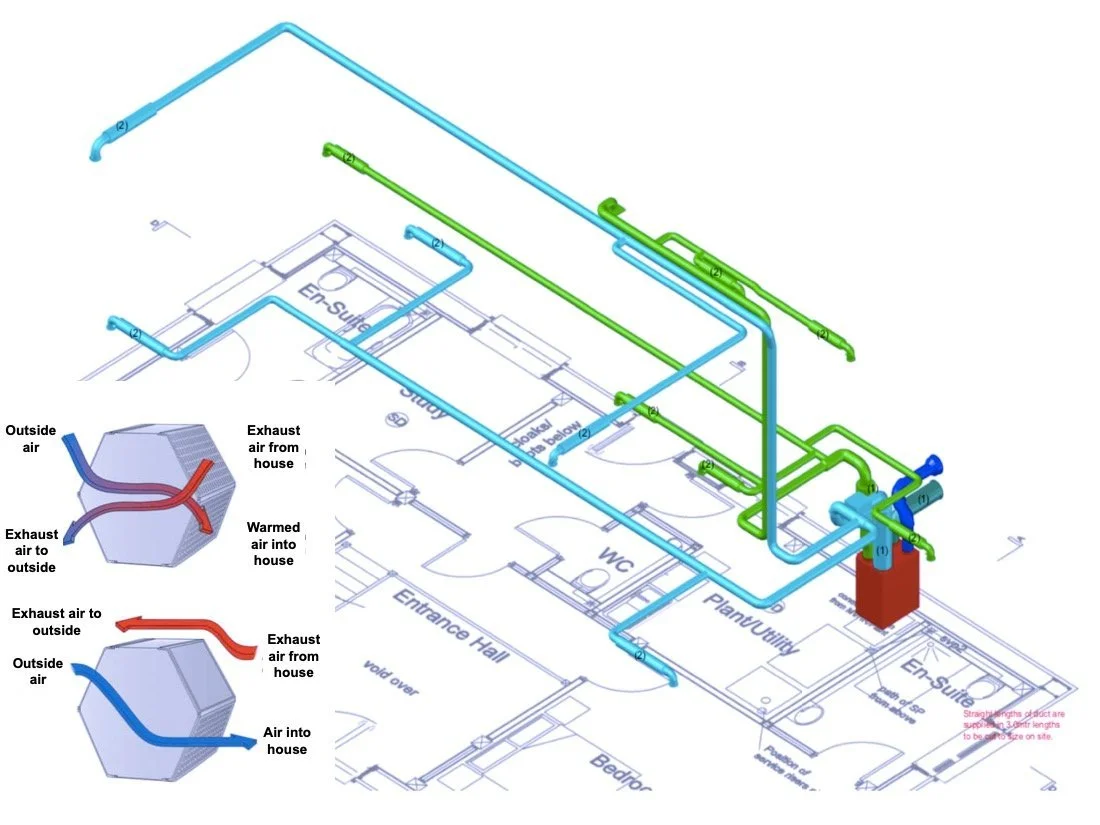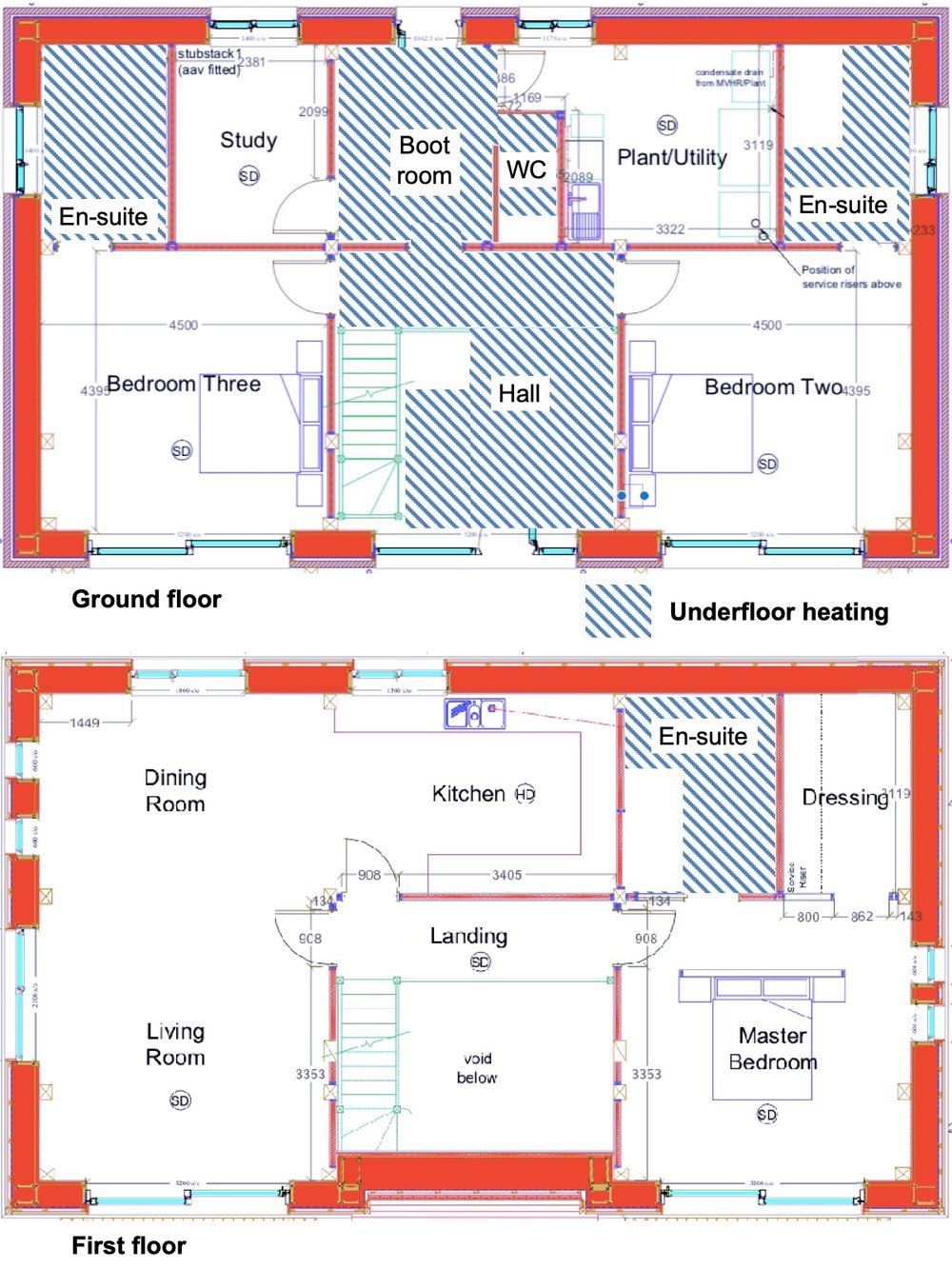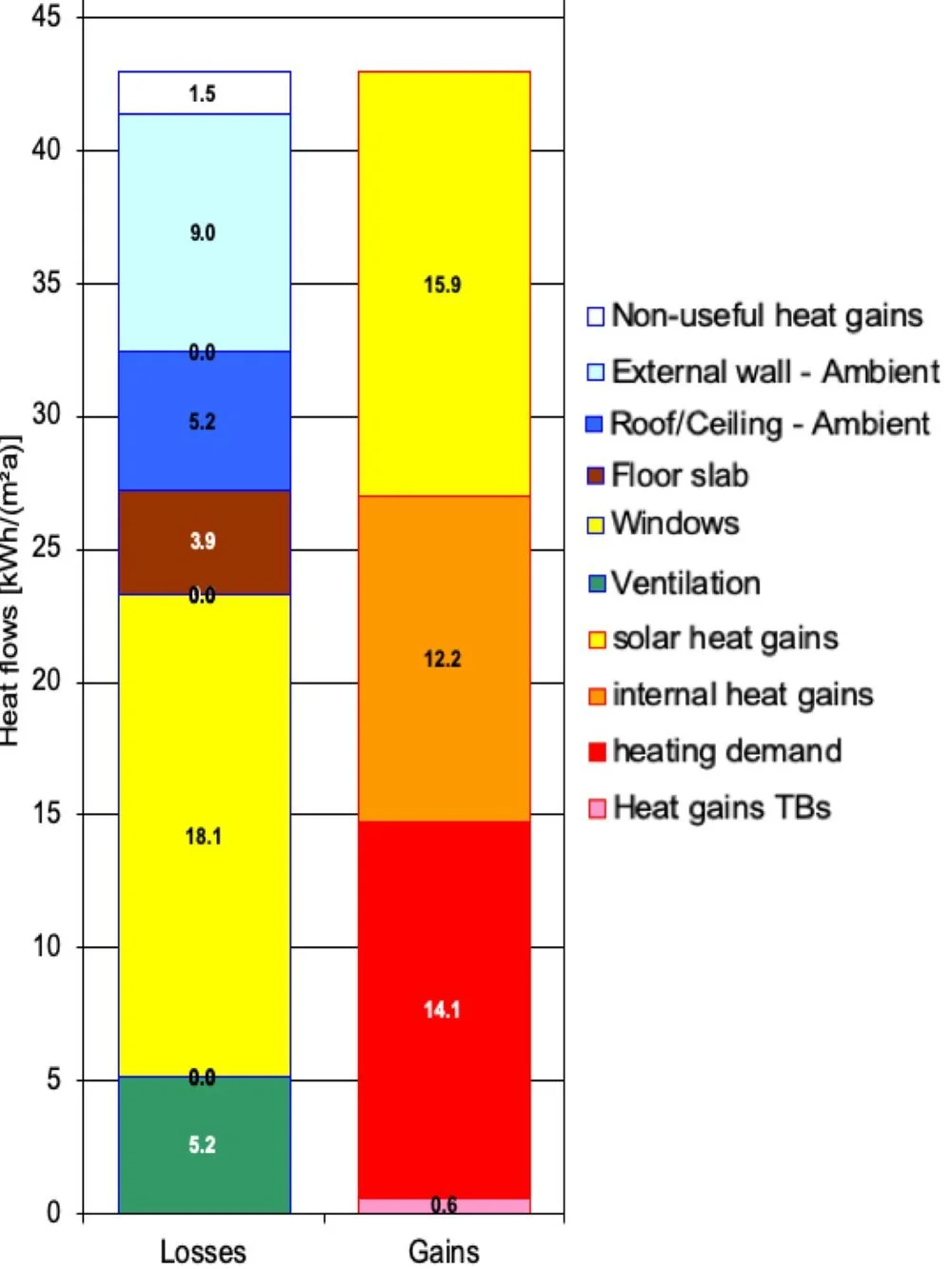Is a passive house a complicated, high-tech building?
Installing a cellulose-filled insulation panel onto the oak frame of Woodlands Malvern B&B passive house
Passivhaus (passive house) is a remarkably simple, ‘low-tech’ approach that is, globally, the gold standard of building energy efficiency. This is due to its ‘fabric first’ approach: this maximises the performance of the materials used for a building at the design stage before considering the use of ‘high-tech’ systems and equipment, and which therefore reduces both up-front and running costs.
‘Passive houses’ have been around for thousands of years
The time-honoured ‘passive house’ principles are very simple: take advantage of the sun to provide warmth, use building materials to retain that heat in winter, and have a shading strategy to keep out the excessive heat of the high sun in summer.
The Passivhaus Institut was established in 1996 by Dr Wolfgang Feist, following a pilot of the first Passivhaus building erected in Darmstadt, Germany in 1990, shown in the photograph, below, and which is still performing today as originally designed: see this video.
Dr Feist and family at the world’s first Passivhaus. Picture credit: International Passive House Association
But the basic passive building idea is far from new and was, and still is, very simple and low-tech in its approach.
An early North American settlement (circa 700-1300 CE) in Mesa Verde National Park, Colorado, USA. The settlement was shaded from the high summer sun but exposed to the low winter sun, providing cooling and warming, respectively. Picture and information credit: ecoHOME
Passive solar buildings, orientated to take advantage of heating by the winter sun, made of materials to help retain heat, and designed to avoid overheating (for example with large overhanging eves and external window shutters) were being built in Roman and in ancient Greek and Chinese times, among others. The photo, right, for example, shows an early example of such buildings in the USA.
More modern-style buildings taking advantage of passive solar heating were built in Europe, the USA and elsewhere in the early 20th Century. For example, the Saskatchewan Conservation House, Canada, (photo, left) was built in the early 1970s and employed many of the principles that are part of the modern-day Passivhaus standard, particularly airtightness and high levels of insulation.
But was Professor Bo Adamson and Dr Wolfgang Feist who developed the formal Passivhaus approach, with Dr Feist establishing the Passive House Institute in Germany which pioneers the development of the Passivhaus standard and construction concepts, building components, planning tools and energy efficiency quality assurance processes.
The simplicity of the Passivhaus standard
The Passivhaus standard is a set of criteria for ultra-low energy buildings. It does not specify building styles or materials, which can be almost anything provided that, as calculated by the Passive House Planning Package, the building’s energy usage is not calculated to exceed the standard. It is evidence-based and applied worldwide (see graphic below, noting that many Passivhaus buildings do not undergo formal certification so there will be many more than indicated). Note also the variety of climates where there are Passivhaus buildings: the approach to low-energy buildings is applicable in both hot and cold ones.
There are more than 5,700 certified Passivhaus buildings worldwide. See: International Passive House Association (2024)
Fabric first approach
A ‘fabric first’ approach means that a new building is orientated to take particular advantage of heating by the sun in winter, and that it’s specifically designed to minimise heat loss and excess heat gain through higher levels of insulation; airtightness and high-performance windows (with more south or south east/west facing glazing and less to the north in the northern hemisphere); and has a mechanical ventilation heat recovery (MVHR) system that constantly provides100% fresh, filtered air throughout the building with minimal heat loss (see below).
A fabric first approach also includes designing to minimise or, preferably eliminate, thermal bridges. A thermal bridge is something that enables heat to pass through the insulation layer, for example, a beam, or at a join between the roof and a wall, or the junction between a window frame and the wall (see below).
Thermal bridges are explained in more detail in the video on the right.
Further, the fabric first approach means that the building materials used themselves help to maximise the building’s energy efficiency. And all this before consideration of add-on energy efficiency equipment such as photovoltaic panels…
Thus, apart from the MVHR, which is a simple device that works automatically (see below), and maybe opening and closing windows and blinds occasionally, these aspects are all permanent features requiring no further input from the occupants thus making passive houses very easy to live in.
A passive house retains heat in winter and keeps excess heat out in summer
We have described the principles of passive house design and the pros and cons of passive house living in other posts. The key Passivhaus principles are:
very high levels of wall, roof, and under-floor insulation (see this post on our Passive house foundations);
high-quality triple-glazing, mainly facing south or south east/west, to maximise winter solar gain;
minimal ‘thermal bridging’ to avoid compromising the insulation;
high air-tightness levels to minimise heat loss and avoid draughts;
mechanical ventilation with heat recovery (MVHR), providing 100% fresh, filtered air throughout, also stopping condensation and mould damage; and
shading to minimise over-heating in the hotter months (see picture, right)
Shading strategy at Woodlands Malvern B&B. The south-facing balconies provide permanent shading to the ground floor rooms and have remote-controlled blinds on top preventing the high summer sun entering the main upstairs rooms. In this photograph, these blinds can be seen in their open position; the remote-controlled binds on the two south-facing roof windows are not opened. Image credit: Curious Egg Films & TV
Key features of this approach are that it:
keeps the building warm in winter - it lets in external warmth from the sun in the colder months, and retains internal heat from from household appliances and the occupants themselves;
prevents excess external heat coming indoors during the warmer months; and
controls humidity levels.
A passive house does this with only minimal requirements for heating and cooling: it thus has a remarkably constant temperature all year round whatever the weather, and is characteristically extremely comfortable and airy and fresh-feeling at all times.
Passive house triple-glazing
The Passivhaus standard is applicable worldwide. In the UK, triple-glazing is required to ensure achievement of the standard, but in the Indian sub-continent double-glazing might suffice, whilst in Alaska you might need quadruple glazing. (However, there are particular issues for roof windows in a passive house. These radiate more heat because they face the sky and need to be fixed on the outer-side of the roof to avoid ponding when it rains. Our Velux, Passivhaus Institut-certified roof windows, for example, are quintuple-glazed — see the section entitled The roof windows in this post about our Passivhaus glazing.)
Modern triple-glazing is more sophisticated now, and performs better than double glazing, yet it is hardly ‘high-tech’.
The problems of double-glazing over triple in the UK’s climate are that it:
The frame of a window transmits more heat that does the glass, including acting as a thermal bridge for the wall, unless it is adequately insulated. Picture credit: Green Building Store
provides less insulation so that the inner pane is colder, creating convection currents and thus draughts; and
is usually installed on the outer edge of the wall allowing greater heat loss through the frame (see diagram opposite).
The temperature of the inner pane of a double-glazed unit is sufficiently low when it’s cold outside to generate convection currents and a sense of a ‘cold radiant’ by the window.
The diagram, below, shows how windows transmit heat out of a building, but this can be reduced by proper fitting and additional insulation around the frame — see below, and see our post on properly fitting triple-glazed windows in a Passivhaus.
The frame of a window transmits more heat that does the glass, including acting as a thermal bridge for the wall, unless it is adequately insulated. Picture credit: Green Building Store
As referred to in the diagram, above, U values represent heat transmission through both the pane and the frame (that is, how much heat can escape through the area of a material). Perhaps counterintuitively, more heat is transferred through the frame (which also acts as a thermal bridge for the wall, with the Ψ (psi) value being the measurement of heat transfer along the length of junctions between materials).
It’s therefore important to take account of the whole window U value and not just the U values of its various components; indeed, the Passive House Planning Package also looks at the installed U value, which takes account not just the window pane and frame U and Ψ values but of how a window is installed. Installing triple glazing in a passive house should be done in a special way to maximise their benefits, including the use of additional insulation around the frame.
To minimise window frame heat losses, in a passive house, properly-installed triple-glazing will:
prevent draughts caused by convection currents generated by colder inner panes — they are a similar temperature to the room — which also increases the usable floor area because there’s no window ‘cold radiant’; and
minimise heat loss through the frame because it’s wrapped in insulation which is continuous with the wall insulation — see diagram, right, and the photographs below, left.
Internal and external insulation on window frames at Woodlands Malvern B&B. Note that the roof window (left) is in-line with the outer edge to avoid ponding when it rains — roof windows thus need to be of a higher specification than ones for walls.
Passive house ventilation
In a passive house, or any building with very high levels of airtightness, you will need an effective ventilation system rather than simply rely on opening windows or trickle vents (which are dependent upon the vagaries of the weather and on wind direction and strength, and which don’t necessarily ventilate all parts of the building thoroughly). Note, however, that you can open windows in a passive house at any time.
Without a proper ventilation system, a very airtight building risks condensation on surfaces and, far more significantly, also within the building’s fabric (that is, interstitial condensation: see the section entitled Comfort: indoor air quality, and condensation in this post).
We’ve described the mechanical ventilation heat recovery (MVHR) system at Woodlands Malvern B&B in another post. It’s a very simple bit of kit: there are ducts going to each room to bring in100% fresh, filtered air and to extract stale air (such as from the kitchen, bathrooms and toilets), and an MVHR unit that consists of two fans (driving the incoming and outgoing air), and a heat exchanger. This consists of a series of thin metal plates that the outgoing and incoming air pass over, and heat from the former passes through these plates to the latter without the air streams mixing. It minimises heat loss whilst providing what we think of as the equivalent of having a window open in every room all the time but with no draughts. Temperature, humidity and airflow detectors and a small bit of electronics inside the MVHR unit automatically control air flows and, in warmer months, bypass the heat exchanger to aid cooling.
Zehnder MVHR unit at Woodlands Malvern B&B
On the right is a picture of our MVHR unit. On the left of it can be seen the two, heavily insulated inlet and exhaust ducts (above and below, respectively) and on the right the silencers for the inlet and exhaust ducts for the house (back and front, respectively).
This piece of technology is probably the only vaguely ‘high tech’ bit of kit that a passive house requires; but it’s almost certainly much less complicated than the average washing machine. It’s also simple to service: you basically need to remove the MVHR inlet and exhaust filters to clean them after six months and to replace them after twelve, as described in another post.
The diagram below shows the plan for the air inlet (blue) and extract (green) ducts for the upper floor rooms of our certified Passivhaus. Inset, the diagram shows how the MVHR heat exchanger warms the incoming air by transferring 90% of the heat from the outgoing air. The lower of these two inset diagrams shows that in the warmer months this system is bypassed to assist cooling.
A diagram of the upper floor ducting of the mechanical ventilation heat recovery system at Woodlands Malvern B&B with, inset, a depiction of the heat exchanger operating in the colder months (above) and in ‘summer bypass’ mode (below). MVHR design: Green Building Store
Heating a passive house
A passive house is designed to have minimal ‘active’ heating requirements. For example, when our house was almost completed, the decorators, working in February, told us that they just put on a fan heater in the hall at the beginning of each day and turned it off after one hour; this was all the heating they needed whilst working.
The Passivhaus standard does not specify what the heating system should be. We chose to install a ground source heat pump for domestic hot water and (minimal) space heating with underfloor heating pipes. As indicated in the diagrams, below left, these pipes cover only 25% of the house’s floor area and are fully able to provide that extra little bit of heat to keep the indoor temperature up when the sun has been hidden behind clouds for a few consecutive days. (We estimate that, at January 2024 electricity prices, we spend £129 heating our house. Annually. See the section entitled Passive houses have minute bills for heating and cooling in another post.)
Note that a heat pump is also simple technology. Most houses already have one or two in daily use: a fridge and a freezer. A heat pump uses the refrigeration cycle to ‘amplify’ heat from one place and then transfers it, usually by a pump circulating heated water, to radiators or similar ‘emitters’ to where you want it. In our case, with a ground source heat pump, we have an additional pump circulating fluid between the heat pump and a long pipe buried in the ground. We describe how a heat pump works in this post about our Passivhaus heating system.
At Woodlands Malvern B&B only a quarter of the floor area has heating, which is rarely used anyway, and helps to maintain a remarkably even temperature throughout the house
The Passivhaus standard does not specify how the building should be heated, but you certainly won’t need a central heating system (another financial saving in both equipment and running costs).
We’d suggest that, in a new-build, underfloor heating is a good method for space heating as there is then no need for wall-hung radiators as the floors themselves act as ‘radiators’. And in our experience, and based on Passive House Planning Package calculations, you definitely won’t need heating in all areas.
Some people living in passive houses use gas or oil-fired boilers (albeit low heat output ones) for space heating, others have heaters that just warm the incoming MVHR air, and some rely only on low-powered towel rails.
As discussed in the next section, in addition to the sun, a passive house will also be warmed by the occupants themselves, as well as by tasks such as cooking and washing; the very high levels of insulation and airtightness helping to retain this heat in cold weather — again, it’s a simple, low-tech approach to staying warm.
Heat gain and losses in a passive house
The diagram opposite shows the relative heat gains and losses from different sources at Woodlands Malvern B&B, taken from our Passive House Planning Package calculations.
It can be seen, for example, that there is calculated to be a slight net loss of heat through the windows (the bright yellow bars in each column). But, more significantly, the heat gains from the sun (yellow bar with an orange margin) plus the internal heat gains provide almost twice as much heat as is expected to be provided by a heating system (‘heating demand’).
It is also noteworthy how little heat is expected to be lost from the ventilation system (because it is so good at retaining heat in the house).
Especially significantly, as indicated by this diagram, is the fact that so much of the heat gain is ‘self-acting’ (that is, ‘passive’) — the solar and internal heat gains occur by design and require no other actions by the occupants or high-tech equipment. And if the minimal active heating is controlled by a bog-standard thermostat then it all occurs automatically.
Building a passive house
Building a passive house is really no more of an issue that building a traditional one. It just needs a meticulous attention to detail, or what one might call ‘old-fashioned craftsmanship’. And with new technology such as Aerobarrier, which is, effectively, a pressurised aerosol spray, achieving high levels of airtightness is very simple. (Note that this technology wasn’t available when we built our house and we have no experience of it.)
Classes of Passivhaus
There are four Passivhaus standards:
EnerPHit — for retrofit projects, where it is usually more difficult to achieve the Classic standard, this has slightly lower performance criteria than the Classic standard;
Passivhaus Plus — where the building itself produces all of the energy that it consumes (such as from photovoltaic panels); and
Passivhaus Premium — where the building produces more energy that it needs itself and can thus export some.
The Passivhaus classes. Image credit: Passive House Trust
The Passivhaus Plus and Premium standards are more high-tech, but only the additional renewable energy equipment that is producing energy for the building, which may just be photovoltaic panels and storage batteries.
Living in a passive house
We’ve written more fully about living in a passive house in some detail in another post. In brief: it’s a doddle. The house basically runs itself. In winter, an ordinary thermostat turns the heating on and off on the rare occasions it’s required, and in the summer another thermostat turns on a cooler battery if it’s beginning to get too warm. (Our cooler battery takes heat out of the incoming air and dumps it in the ground so that our ground source heat pump can use it to heat domestic hot water (see the section entitled Cooler battery in our post on our MVHR system. Obviously, you can set these thermostats to any desired temperature, as with a conventional central heating system. (Note that we chose to fit a cooler battery; such, albeit very simple, technology is not part of the Passovhaus standard.)
We operate horizontal blinds on our two balconies and on our two south-facing roof windows with remote controls to stop the high summer sun from overheating the house, and we have remotely operated indoor blinds on one of our west-facing windows to stop overheating by the afternoon sun.
We clean/change the two filters in our MVHR system every six months (this five-minute job is described in our post on MVHR filter replacement).
We have our ground source heat pump serviced once a year, as you would most equipment for domestic hot water and space heating.
We open windows whenever we want to and can do so both earlier and later in the year than our neighbours who live in traditional houses.
And that’s it!
In our experience of self-building and living in a certified, award-winning passive house, they are not at all complicated and, unless you want to employ a lot of special kit, do not need to be high-tech.
Experience a passive house yourself
Why not experience the Passivhaus difference for yourself and find out how incredibly comfortable they are to be in and how simple they are? Stay at Woodlands Malvern B&B, and we’ll also be pleased to share our experiences with you and try to answer any questions you may have.


